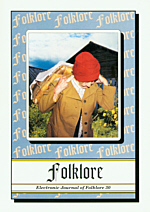Forest Myths: A Brief Overview of Ideologies before St. Stefan
Forest Myths: A Brief Overview of Ideologies before St. Stefan
Author(s): Pavel LimerovSubject(s): Customs / Folklore
Published by: Eesti Kirjandusmuuseum
Keywords: animal symbolism; hunting calendar; Komi mythology; Chudes; Sami; solar myth; totemism; shamans journey; Earth Mother; Orthodox
Summary/Abstract: The article discusses forest and solar myths in Komi mythology in the era prior to Christening in the 14th century. After adopting Christianity the forest became to be regarded as the abode of heathens and dark devilish forces. In the medieval Komi calendar, the year was divided into two major periods – the elk season and the bear season, and into nine months, according to the season of hunting, and, the pagan religion. In the 19th century the Orthodox calendar had already been adapted to the hunting activities, and the agricultural activities had assumed the principal position in the southern areas of the Komi settlement. Folklore and archaeological materials provide evidence of the existence of at least two basic mythological systems in the prehistoric mythology of the Komi, one of which is connected with a calendar legend about the hunt on a Sun elk, and the other with a cosmogonic myth about a water bird extracting the earth from the bottom of the primordial ocean. The bronze pendants and metal clasps from Perm reflected the structure of the Universe, expressed in animal symbols. Particular groups of zoomorphic images in turn symbolized the structure of a ethno-social group, or the shaman’s journey across the heaven to two heavenly keepers of the world. The article examines the widespread motives about Chudes, goddess with three faces and four breasts, Sun elk, Mother Earth, etc.
Journal: Folklore: Electronic Journal of Folklore
- Issue Year: 2005
- Issue No: 30
- Page Range: 97-134
- Page Count: 38
- Language: English

